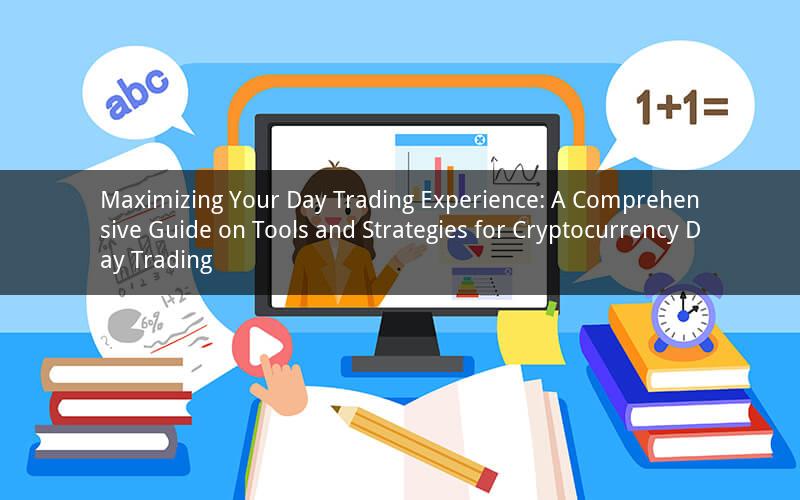
Day trading cryptocurrency has become a popular investment strategy among many traders. The volatile nature of the crypto market presents a high-risk, high-reward opportunity for those who are well-prepared. This article will explore various tools and strategies to help you excel in your day trading endeavors. We will delve into the importance of choosing the right platform, understanding market analysis, managing risk, and executing profitable trades.
1. Selecting the Best Day Trading Platform
The first step in your day trading journey is selecting the right platform. A reliable platform will provide you with essential features, such as real-time market data, technical analysis tools, and order execution capabilities. Here are some of the top platforms to consider:
a. Binance: Known for its extensive range of cryptocurrencies and advanced trading features, Binance is a popular choice among day traders.
b. Coinbase Pro: As one of the most reputable exchanges, Coinbase Pro offers low fees, robust security measures, and a user-friendly interface.
c. Kraken: Offering a wide range of cryptocurrencies and advanced trading tools, Kraken is another excellent platform for day traders.
2. Understanding Market Analysis
To make informed trading decisions, it is crucial to understand market analysis. This involves analyzing price charts, volume, and market indicators. Here are some key concepts to familiarize yourself with:
a. Technical Analysis: This approach involves studying past market data to predict future price movements. Tools like moving averages, RSI (Relative Strength Index), and Fibonacci retracement levels can be valuable.
b. Fundamental Analysis: This involves examining the underlying factors that affect a cryptocurrency's value, such as its technology, market sentiment, and regulatory news.
c. Sentiment Analysis: Analyzing social media, news, and other sources to gauge market sentiment can provide insights into potential price movements.
3. Developing a Trading Plan
A well-defined trading plan is essential for managing risk and achieving long-term success. Your trading plan should include the following elements:
a. Risk Management: Decide on the maximum amount of capital you are willing to risk on each trade and adhere to this limit strictly.
b. Entry and Exit Strategies: Develop rules for entering and exiting trades based on your analysis and risk tolerance.
c. Stop Loss and Take Profit: Set predefined levels to minimize losses and secure profits.
4. Leveraging Technical Analysis Tools
Technical analysis tools can significantly enhance your day trading experience. Some of the most useful tools include:
a. Indicators: Moving averages, RSI, MACD (Moving Average Convergence Divergence), and Bollinger Bands are just a few examples of indicators that can help you identify trends and potential reversal points.
b. Charts: Line, bar, and candlestick charts provide visual representations of price movements and can help you make informed trading decisions.
c. Pattern Recognition: Identifying patterns such as head and shoulders, triangles, and flags can help you predict future price movements.
5. Keeping a Trading Journal
Keeping a trading journal is a crucial practice for self-improvement and accountability. It allows you to analyze your trading performance, identify strengths and weaknesses, and make informed adjustments to your strategy. Here are some tips for maintaining an effective trading journal:
a. Record all trades, including the reason for entering and exiting the trade, along with the trade's outcome.
b. Analyze your trades regularly to identify trends and patterns.
c. Be honest and objective in your evaluations.
6. Continuous Learning and Adaptation
The crypto market is constantly evolving, and successful day traders are those who adapt to new trends and strategies. Stay informed about market developments, attend workshops or webinars, and network with fellow traders to exchange ideas and insights.
Q1: What is the most important factor to consider when selecting a day trading platform?
A1: The most important factor is finding a platform that offers reliable and real-time market data, advanced technical analysis tools, and a user-friendly interface.
Q2: How can I determine the optimal entry and exit points for my trades?
A2: Use technical analysis tools and indicators, such as moving averages and RSI, to identify potential entry and exit points. Additionally, consider market sentiment and news events that may impact price movements.
Q3: What is the most effective risk management strategy for day trading cryptocurrency?
A3: The most effective risk management strategy is to allocate a specific percentage of your capital to each trade and use stop-loss and take-profit orders to minimize losses and secure profits.
Q4: Can I successfully day trade cryptocurrency without any prior experience?
A4: While it is possible to succeed in day trading with no prior experience, it is highly recommended to educate yourself thoroughly and practice with a demo account before going live with real capital.
Q5: How can I stay updated with the latest market developments and trends?
A5: Follow reputable news sources, join cryptocurrency forums and communities, and attend workshops or webinars to stay informed about market developments and trends.